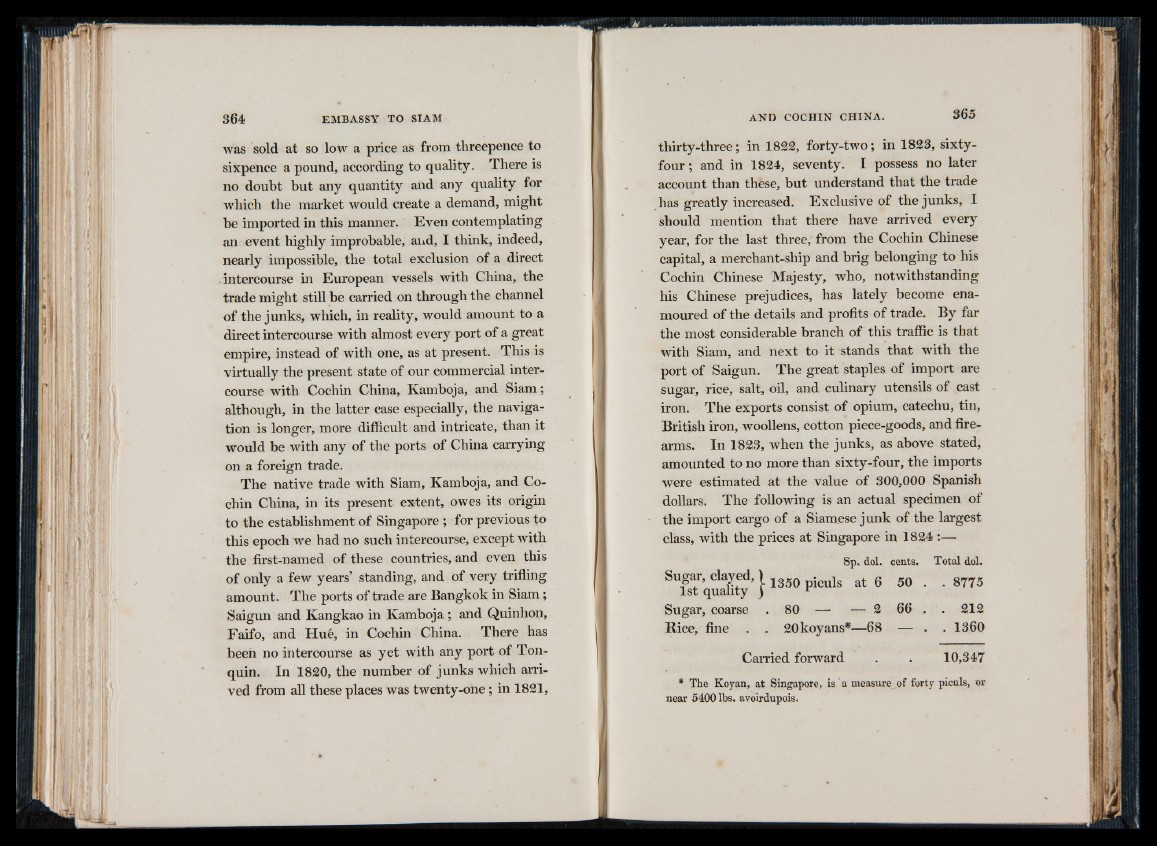
was sold at so low a price as from threepence to
sixpence a pound, according to quality. There is
no doubt but any quantity and any quality for
which the market would create a demand, might
be imported in this manner. Even contemplating
an event highly improbable, and, I think, indeed,
nearly impossible, the total exclusion of a direct
intercourse in European vessels with China, the
trade might still be carried on through the channel
of the junks, which, in reality, would amount to a
direct intercourse with almost every port of a great
empire, instead of with one, as at present. This is
virtually the present state of our commercial intercourse
with Cochin China, Kamboja, and Siam;
although, in the latter case especially, the navigation
is longer, more difficult and intricate, than it
would be with any of the ports of China carrying
on a foreign trade.
The native trade with Siam, Kamboja, and Cochin
China, in its present ex-tent, owes its origin
to the establishment of Singapore ; for previous to
this epoch we had no such intercourse, except with
the first-named of these countries, and even this
of only a few years’ standing, and of very trifling
amount. The ports of trade are Bangkok in Siam;
Saigun and Kangkao in Kamboja ; and Quinhon,
Faifo, and Hué, in Cochin China. There has
been no intercourse as yet with any port of Ton-
quin. In 1820, the number of junks which arrived
from all these places was twenty-one; in 1821,
thirty-three; in 1822, forty-two; in 1823, sixty-
four ; and in 1824, seventy. I possess no later
account than these, but understand that the trade
has greatly increased. Exclusive of the junks, I
should mention that there have arrived every
year, for the last three, from the Cochin Chinese
capital, a merchant-ship and brig belonging to his
Cochin Chinese Majesty, who, notwithstanding
his Chinese prejudices, has lately become enamoured
of the details and profits of trade. By far
the most considerable branch of this traffic is that
with Siam, and next to it stands that with the
port of Saigun. The great staples of import are
sugar, rice, salt, oil, and culinary utensils of cast
iron. The exports consist of opium, catechu, tin,
British iron, woollens, cotton piece-goods, and firearms.
In 1823, when the junks, as above stated,
amounted to no more than sixty-four, the imports
were estimated at the value of 300,000 Spanish
dollars. The following is an actual specimen of
the import cargo of a Siamese junk of the largest
class, with the prices at Singapore in 1824 :—
Sp. dol. cents. Total dol.
Sugar, clayed, | . ]s „ 50 ^
1st quality ) r
Sugar, coarse . 8 0 — —• 2 66 . . 212
Rice, fine . . 20koyans*—68 — . . 1360
Carried forward . . 10,347
* The Koyan, at Singapore, i s ' a measure of forty piculs, or
near 5400 lbs. avoirdupois.